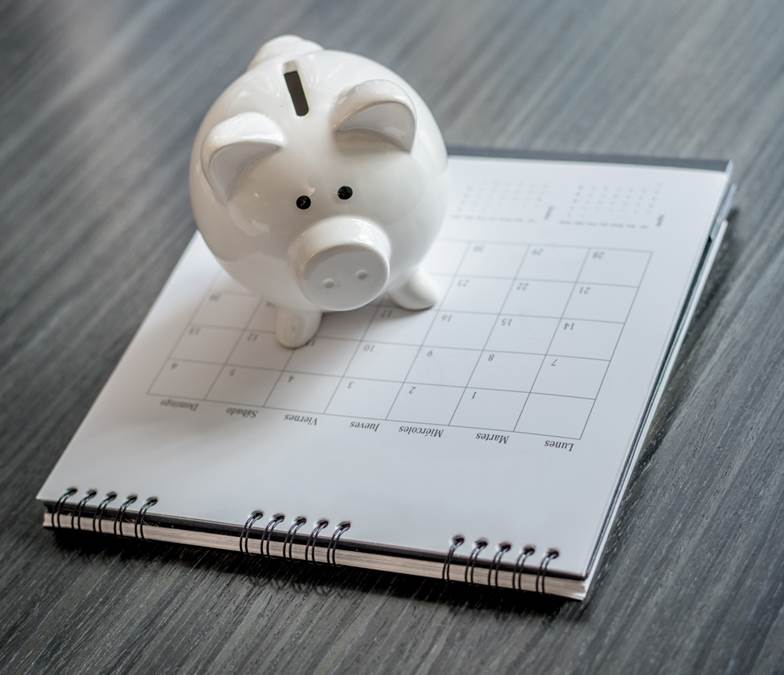How Many Bank Accounts Do You Need?
When you open an account at a bank or credit union, you usually start off with one checking account and one savings account. For many people, those...

When a bank fails, the news always likes to talk about the factors that led to the bank’s failing, as well as how the bank’s failing may or may not affect the economy. If you’re a customer of the bank that failed, though, odds are you’ll have some different questions. The biggest question is what will happen to the money you had in your accounts?
Fortunately, banks and credit unions failing are rare. Even more fortunately, If one does fail, the money in your accounts is insured for up to $250,000 per borrower, per account, per financial institution through the FDIC (for banks) and NCUA (for credit unions). This is usually done by moving all the assets from the failed financial institution to a new one.
That doesn't mean you can sit back and relax, though. You'll still need to take some steps to make sure that the transition goes smoothly.

Before we get into the steps you need to take, you need to know what happens when a credit union or bank fails. First, the FDIC or NCUA gets appointed as a receiver--in other words, the trustee that will be responsible for the bank or credit union in question.
Once the FDIC or NCUA takes receivership of the failed bank, they will try to find another banking institution to acquire the bank or credit union that failed. For instance, when the Silicon Valley Bank collapsed, the FDIC found a buyer in First-Citizens Bank & Trust Company. Ideally, this is done as quickly as possible.
Once the acquisition has taken place, the acquiring bank or credit union will let its new members know what has happened. In the event another bank will not take over the assets, the FDIC or NCUA will send the failed bank’s depositors reimbursement checks covering their accounts up to $250,000 per type of account they had at the financial institution.
The timeline for a new bank to take over after a bank failure can vary, but the FDIC and the acquiring bank or credit union work diligently to minimize any disruption to depositors. In some cases, the process can be completed within a matter of days, especially if an acquiring bank is readily available. However, in more complex situations, it may take longer, as financial assets and liabilities need to be transferred, and account systems need to be integrated.
While depositors may not have immediate access to their accounts during this transition period, the FDIC and the new bank are working to ensure account access is restored as soon as possible. It's important to stay patient, follow instructions, and keep an eye out for updates from the new bank.
Anyone who has lived through an era where banks failed, like the Great Recession, might be very interested in signs that a financial institution might be at risk of failing. Here are some signs to watch out for:
By staying informed and being proactive, you can better protect yourself in case of a bank failure.
The first step you should take if your bank fails is to thoroughly review your account statements. Look for any unusual activity, such as a discrepancy or an error. You should also make a separate record of all your accounts, along with their balances, and print out your account information for proof.
Once you’ve got proof of the status of all your accounts, also record any outstanding checks, electronic transfers or pending transactions. The reason you want to do this is that, while the receiving bank will do its best to see that all the information about the failing bank’s accounts is accurate, you’ll want to check your accounts yourself to make sure.
It’s worth pointing out that your original bank will keep operating normally until it has transferred its assets to the new bank, so you’ll likely still be able to access your online bank account, as well as the institution’s mobile app.
If you have over $250,000 in an account (or $500,000 in a joint account), you need to be aware that any funds over that limit are considered uninsured deposits. You’ll need to file a receiver’s certificate, which is a claim that the bank or credit union owes you money. You might get some money as the failed bank’s assets are liquidated to cover the outstanding costs, but it could take several months—and you might not get all your money back.
While you might be tempted to withdraw all your funds and transfer them to another bank or credit union, avoid that urge. If enough people try to withdraw their funds at once, it can lead to a bank run and derail the organized transfer of funds from the failed bank to the new one.
Instead, use your accounts normally. This might seem like an impossible feat, but one of the many benefits of the NCUA and FDIC is that, even when a bank or credit union fails, it can’t lock you out of your accounts. Instead, the bank or credit union will keep running under the FDIC or NCUA, so you’ll be able to move money around as normal.
The timeline for accessing your money after a bank failure can vary depending on various factors, including the complexity of the bank failure and the availability of an acquiring bank. Generally, the FDIC aims to make deposits available within one business day, ensuring depositors have timely access to their funds. In the case of the First Republic Bank failure, for instance, the news that JPMorgan Chase would take First Republic's assets was announced the same day as the news the First Republic had failed.
In some cases, deposit insurance funds may be used to expedite payment, further reducing any delays. It's important to stay in touch with the FDIC for updates on when you can access your funds, as they will communicate any information regarding account access and availability.

Once you know which new credit union or bank has taken on the assets of the failed one, you’ll want to get up to speed on what the new financial institution has to offer. Here are a few key steps to take:
When transitioning to a new bank, it's important to learn about the products and services it offers. These should include:
Of course, you'll also want to see what types of checking accounts and savings accounts the new bank or credit union has to offer. You might even want to make sure you can open multiple savings accounts to manage your money more effectively or save for different financial goals. The more you know about the products and services your bank or credit union offers, the more use you’ll get from them.
In addition to the products and services, you’ll want to check what kind of fees the new bank or credit union charges. If you don’t, you might get a nasty surprise when you get charged a fee for something your old bank or credit union provided for free. Here are some fees to watch out for:
Additionally, once you know what fees your new financial institution charges, compare them with the fees of other banks and credit unions to make sure they’re competitive. This can potentially save you a lot of money in the long run.
These days, many people interact with their banks and credit unions through online banking. Take the time to log into your new online bank account and get acquainted with the features it offers. If the new bank or credit union, you might even want to download the mobile app as well.
Once you've accessed your new online banking account, you might want to try to use it. For instance, you can open a savings account using your online banking platform, and then transfer money into it. You might even see if your new bank and credit unions offer person-to-person payment features, like Zelle.
To continue using your accounts seamlessly, be sure to order a new debit card from your new bank. This ensures uninterrupted access to your funds and allows you to make purchases with ease. Once you receive your new debit card, activate it as soon as possible, and you might even want to make a sample transaction to make sure it works.
While American banks and credit unions failing is rare, it can happen. If your financial institution fails, you’ll want to know what to do to stay on top of the situation. Make sure to check your accounts, record the amount each account contains and use your accounts normally. When you learn what new bank or credit union has taken over the failed financial institution, get to know it as soon as possible.
If you’re looking for a new place to keep your money because you’re worried about the stability of your current financial institution, become a member of First Alliance Credit Union today. You only need $5 to become a member, and from there you can take advantage of all the products and services First Alliance Credit Union has to offer.

When you open an account at a bank or credit union, you usually start off with one checking account and one savings account. For many people, those...

xIdentity theft is when a person’s private information is fraudulently acquired and used by another person. This information includes financial,...

If your bank or credit union lets you know they’re closing your account, the odds are good you’re going through some serious financial hardship. This...